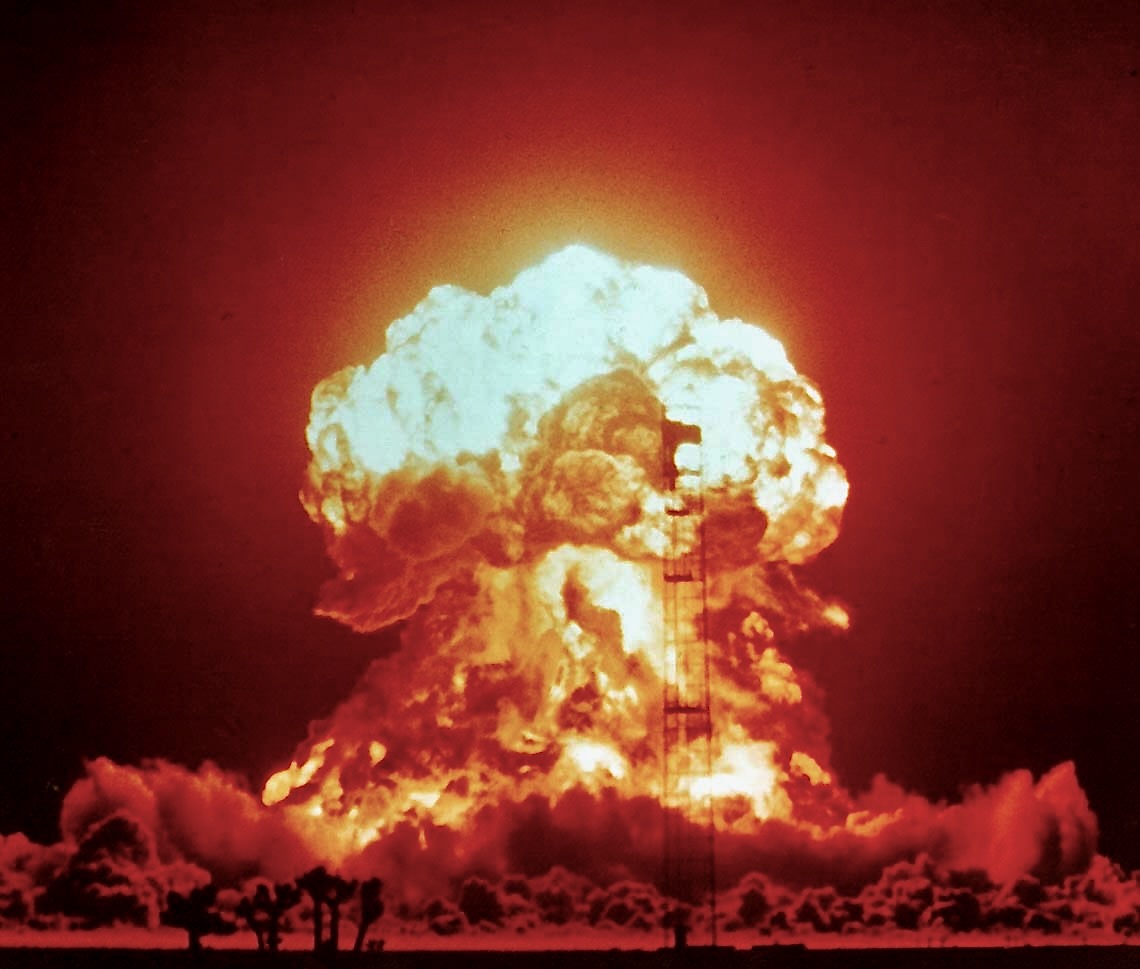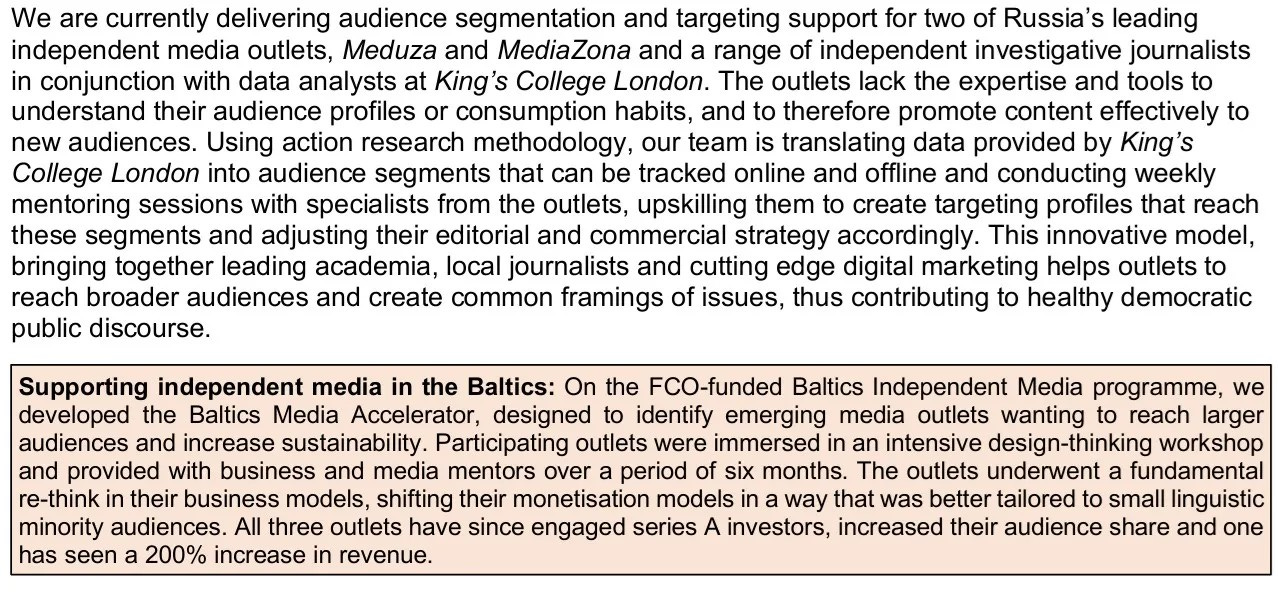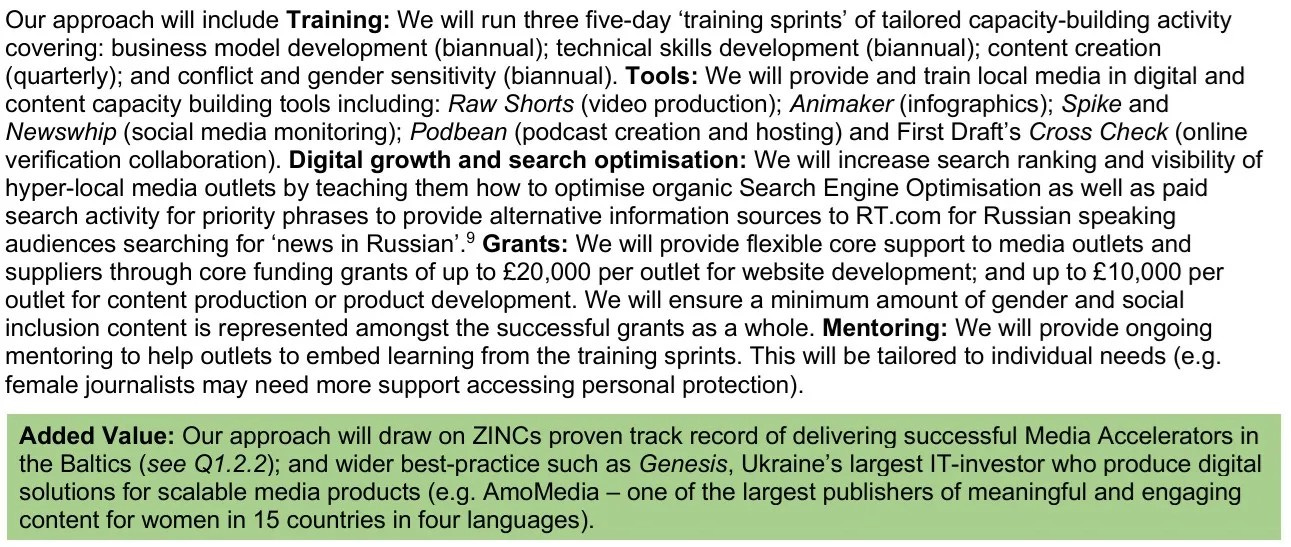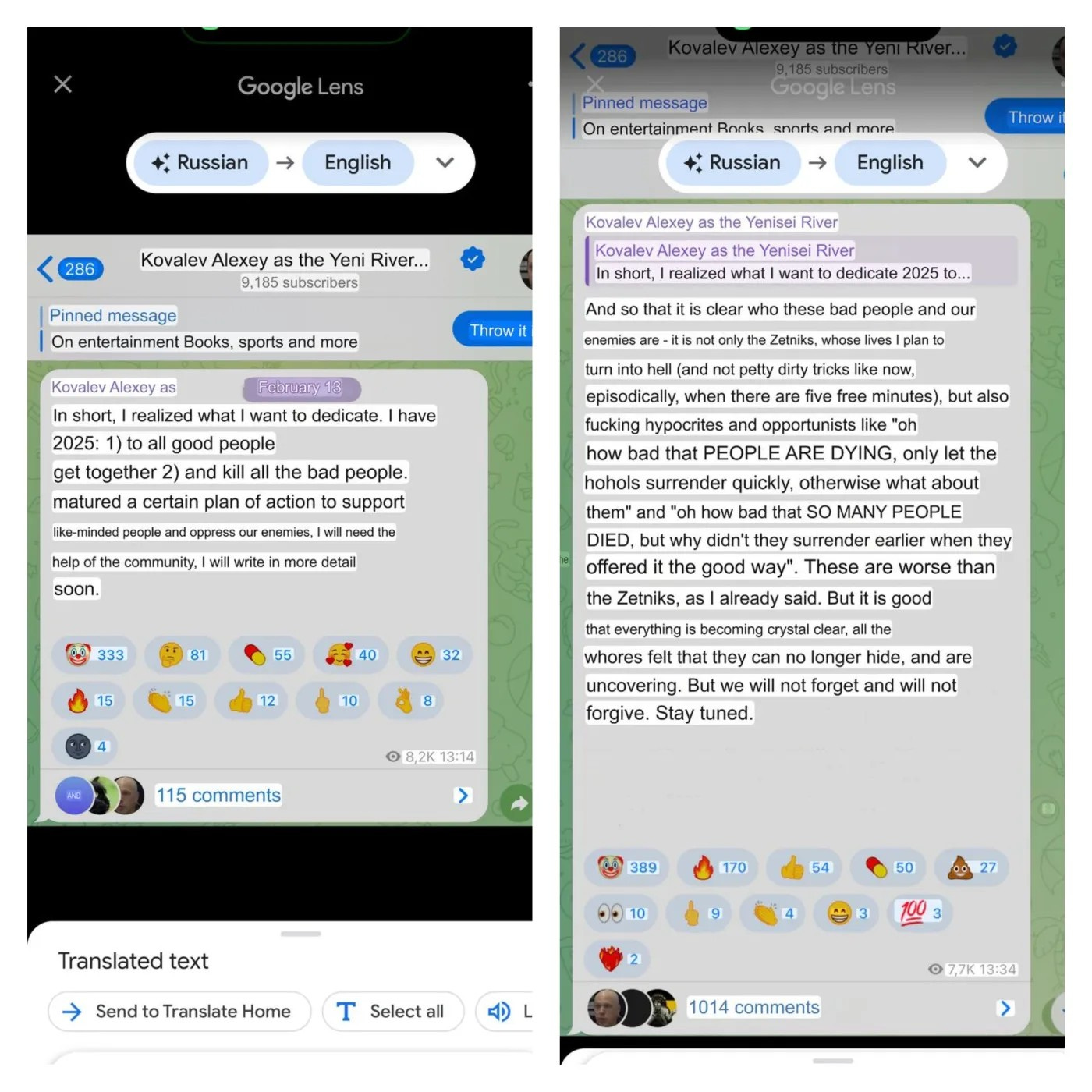By Natylie Baldwin, Consortium News, 4/21/25
Neo-Nazism’s rise in Ukraine is due to the silent approval of Ukraine’s political and military elites who prefer to turn a blind eye because they rely on the far-right for their military potential, Ukrainian academic Marta Havryshko tells Natylie Baldwin.
Dr. Marta Havryshko holds a Ph.D. in History from the Ivan Franko National University in Lviv, Ukraine. Her research interests are primarily focused on sexual violence during World War II and the Holocaust, women’s history, feminism, and nationalism.
She is currently a visiting assistant professor at the Strassler Center for Holocaust and Genocide Studies at Clark University in Worcester, Massachusetts. Her Twitter handle is @HavryshkoMarta.
I spoke with her recently via email.
Baldwin: Please tell us a bit about your academic background and how you came to focus on the holocaust and Ukrainian ultra-nationalism?
Havryshko: Ukrainian ultra-nationalism is something that has surrounded me since childhood. I grew up in a village in Galicia, a region that holds a special place in the history of the Ukrainian nationalist underground, as it was here that the Organization of Ukrainian Nationalists (OUN), founded in 1929, and its military wing — the Ukrainian Insurgent Army (UPA), which emerged in 1942 — were especially active.
Some of my relatives were involved in these organizations and were later repressed by the Soviet regime for their participation. Family memory was saturated with stories of forced collectivization.
No family gathering passed without my grandfather recounting how the Soviets took away his family’s oxen, and how, when those oxen were later driven past their house to pasture, they made sorrowful sounds. Actually, the land, where my parents erected a house in [the] 2000s long ago belonged to our family and was seized by Soviets in 1939, when they occupied Western Ukraine due to [the] Molotov-Ribbentrop Pact.
Despite the ethnic diversity in my family, the stories centered on the Ukrainian one were dominant. I believe this was partly due to it being a survival strategy in a small Galician community, which had various instruments of social control —including over the hegemonic memory regime. My school was one such guardian of the “correct” national memory.
The history of Ukrainian nationalism was taught as both heroic and tragic, with a clear division between the “good guys” (Ukrainian nationalists) and the “bad guys” (Soviets). War crimes and crimes against humanity committed by OUN and UPA were obscured, marginalized, and silenced in the educational program. The glorification of these organizations became a fundamental part of “patriotic upbringing” at my school. That is why, to this day, I know all the nationalist songs by heart.
When I became a history student at Ivan Franko National University of Lviv, I didn’t significantly deepen my knowledge about OUN and UPA, as an apologetic approach to them prevailed in the academic environment. So, after defending my dissertation on the attitudes of various Galician political circles toward Nazi Germany between 1933 and 1939, I decided to delve deeper into the history of Ukrainian nationalism during WWII. My findings shocked me.
I realized that many of those who are celebrated in Ukraine as freedom fighters were, in fact, involved in the Nazi Holocaust and anti-Jewish violence. The myth that Jews willingly served in the UPA shattered when I started conducting interviews with my informants—dozens of women who had been part of the OUN underground.
One lady told me there was a Jewish doctor in her UPA unit, but he was always under guard. “Why?” I asked. “So he wouldn’t escape,” she replied, surprised by my ‘naivety’. This story — like many others I heard — revealed the forced mobilization of Jewish professionals into the ranks of the UPA. Some of them were executed in the spring of 1944, as they were suspected of potentially siding with the Soviets.
Baldwin: You’ve written a lot about how the history of WWII and how the holocaust has been weaponized by both Russia and Ukraine in the current conflict. Can you explain what you see as the misuse of the holocaust and WWII by the Russian government and nationalists?
Havryshko: The memory of World War II plays a crucial role in the political and military discourse of the Russian-Ukrainian war. And not only because it is the largest war in Europe since 1945. And not only because there are still living witnesses of the Nazi occupation in Ukraine, who often compare the behavior of the Nazis to that of Russian soldiers in the occupied Ukrainian territories.
The memory of World War II is weaponized by different political actors for political and military purposes. For example, when Putin began his angry speech on the night of February 24, 2022, he emphasized that one of the goals of the so-called “special military operation” was the “denazification” of Ukraine.
Top Russian propagandists frequently refer to the Ukrainian government as a “Nazi regime” and call Ukrainian soldiers “Nazis.” State actors construct a hegemonic narrative that evokes the memory of the brave Soviet people, particularly Russians, who fought against the Nazis and their allies. This idea is clearly represented in the so-called Immortal Regiment marches held in major Russian cities every May 9 during Victory Day celebrations.
During these processions, people carry portraits of their ancestors who fought in the “Great Patriotic War.” Since 2022, participants in some of these events have also begun carrying portraits of Russian soldiers who died in the war against Ukraine—portraying them as the successors of their grandfathers who fought the Nazis.
Russian soldiers participating in the war against Ukraine also wear symbols and patches that allude to WWII memory—for example, the ribbon of Saint George. In Ukraine, the opposite trend is observed. Some Ukrainian soldiers wear patches bearing the symbol of the Waffen-SS Division “Galicia,” formed in 1943 under German command.
There is also a unit in the Ukrainian army named “Nachtigall,” after the battalion formed by the German Abwehr in 1941 from ethnic Ukrainians. Another unit named Luftwaffe uses Nazi eagle as its symbol.
The “Vedmedi” unit uses SS bolts and the SS motto “My Honor is Loyalty” as official insignia. Some soldiers also wear patches featuring symbols of various SS divisions, including infamous Dirlewanger Brigade, and the Nazi eagle. Some soldiers of the Russian Volunteer Corps wear ROA patches (Russian Liberation Army, aligned with Nazi Germany).
A number of soldiers have even founded clothing brands that glorify the Wehrmacht and de facto justify Nazi crimes, including the Holocaust.
This trend is deeply absurd, given that the Nazi occupation regime in Ukraine led to the deaths of millions of people, including 1.5 million Jews. However, in the logic of those soldiers who glorify the army of the Third Reich, the Nazis fought against the main enemy of the Ukrainian nation — the Russians and the Soviet Union.
In doing so, they artificially isolate this particular aspect of Nazism, while ignoring its crimes. This is an extremely dangerous trend that, unfortunately, is gaining popularity, due to the silent approval of Ukraine’s political and military elites, which prefer to turn a blind eye on this because they rely on the far-right in terms of their military potential.
Baldwin: Can you also explain how the Ukrainian government and its western allies have white-washed the contemporary Ukrainian ultra-nationalists and their historical role in the WWII massacres against Jews, Poles and others?
Havryshko: For a long time after the collapse of the Soviet Union, the glorification of OUN and UPA remained mostly a regional cult, specific to Western Ukraine. After the Maidan revolution, this cult began to be artificially promoted at the national level.
Firstly, this was facilitated by the creation of the so-called Ukrainian Institute of National Memory, which made the glorification of Ukrainian nationalists one of its key areas of work. Secondly, the Ukrainian parliament adopted a memorial law in 2015 that recognized members of the OUN and UPA as “fighters for the independence of Ukraine” and introduced penalties for individuals who “publicly express disrespect” toward them.
A number of Western scholars criticized this law, fearing that it would close the door to open discussion about the complex history of the OUN and UPA.
Despite this, both state and non-state memory actors in Ukraine launched a vigorous campaign to heroize Ukrainian nationalists. This was reflected in the emergence of numerous new places of memory — such as monuments, museums, memorial plaques, street names, exhibitions, documentary films, programs, etc. At the same time, a process of so-called “decommunization” began, aimed at erasing everything connected to Ukraine’s Soviet past from the public space.
This memory crusade targeted not only monuments to Lenin, Dzerzhinsky, Kosior, and other Soviet figures involved in mass repressions and other Soviet crimes, but also soldiers of the Red Army who liberated Ukraine from German occupation. This war on everything Soviet entered a new phase after Russia’s full-scale invasion of Ukraine in 2022.
One of its consequences has been an even deeper “Banderization” of Ukraine (from Stepan Bandera—the leader of the OUN). Streets named after Stepan Bandera and UPA commander Roman Shukhevych began to appear in regions like Chernihiv, Odesa, Kherson, Donetsk, and Poltava — places where these historical figures were never popular, and were often seen as Nazi collaborators responsible for political terror against Ukrainians who had built the “Soviet national project” in Ukraine.
The problem with this memorialization lies in the fact that Bandera, Shukhevych, and other members of the OUN and UPA were proponents of ethnic nationalism, racism, and antisemitism and an authoritarian state. They collaborated with the Nazis and took part in their crimes, including the Holocaust.
Furthermore, they are responsible for the deaths of at least 100,000 Polish civilians in Ukraine during World War II as part of their nationalist project to build an ethnically homogeneous state.
They also widely used terror against Ukrainian civilians who criticized their actions. They often applied the principle of collective punishment, killing entire families—including small children—of alleged “enemies of the Ukrainian nation.”
However, these inconvenient facts are being concealed, and those who criticize this ethnonationalist memory regime are labeled “Russian agents”—a charge which, in the context of war with Russia, not only delegitimizes them but effectively puts a target on their backs.
They are subjected to cancel culture, bullied by their colleagues, and their voices are silenced and marginalized. This is being done because a heroic historical myth is needed by the state to consolidate society around political leadership during wartime. In other words, the state is instrumentalizing historical myths and nationalist memory in its war efforts.
What is particularly notable is that Western scholars, who were until recently quite critical of the glorification of the OUN and UPA, are now largely silent. Moreover, some are framing this ethnonationalist memorial policy as part of the nation-building process and decolonization.
In doing so, they are legitimizing dangerous trends—glorification of ethnonationalism, racism, antisemitism, and the justification of ethnic and political violence in the name of the nation. This poses a threat to a Ukrainian democratic future and clearly contradicts talking points that Ukraine is fighting for “freedom and democracy” in its resistance to Russian aggression.
Baldwin: There have been many reports in recent years about the growing influence of ultranationalists on Ukrainian society and culture. For example, there are reports of Ukrainian schoolbooks that teach outlandish propaganda, such as suggesting that Ukraine was the linguistic origin of western European languages and revering Nazi era war criminals. As far as you are aware, to what extent is there such propaganda in Ukrainian schools? What does this portend for the future of Ukrainian society?
Havryshko: The whitewashing of the Ukrainian nationalist underground—which inevitably leads to Nazi apologism and Holocaust distortion—is one of the most troubling developments in public schools across Ukraine. For example, not long ago, all schools in Lviv, following an order from the city council, widely commemorated the anniversary of the death of Roman Shukhevych, who was killed by the Soviets on March 5, 1950. Children of various ages watched propaganda films and attended lectures. The youngest students were encouraged to draw the red-and-black flag of the UPA or portraits of Shukhevych. These forms of memorialization were clearly apologetic. I highly doubt that the children were offered any opportunity to discuss the role of the 201st Schutzmannschaft Battalion, which Shukhevych commanded during punitive actions against civilians in Belarus in 1942, or his responsibility for other war crimes.
Any attempts to include critical questions about the history of the OUN and UPA in Ukrainian school textbooks are met with strong resistance from nationalist circles. A few years ago, for instance, a scandal broke out in Lviv when a history textbook referred to the “Nachtigall” Battalion as a collaborationist formation—which it indeed was, since it was created by the Germans and served German interests.
The anti-Jewish violence committed by Ukrainian nationalists is one of the most hidden and suppressed chapters in the school curriculum. Recently, I came across a 10th-grade history textbook published in 2023. It contained no information at all about the pogroms that took place in Western Ukraine in the summer of 1941. In many places, these pogroms occurred during a power vacuum—after the Soviet army had retreated and before the Germans had fully arrived.
Taking advantage of this vacuum, members of the OUN in towns and villages across Galicia, Bukovyna, and Volyn organized killings, beatings, rapes, and robberies of their Jewish neighbors—accusing them collectively of crimes of the Soviet regime and declaring them enemies of the Ukrainian people.
In cities like Lviv, Ternopil, and Zolochiv, these pogroms were instigated by the Germans, but local Ukrainians were willing perpetrators. This uncomfortable truth is hidden from students because it does not fit into the dominant heroic or victimhood narrative. However, responsibility can only be cultivated through the acknowledgment of one’s own guilt.
Baldwin: You have spoken frequently on social media recently about the dangerous influence of and threats you’ve personally received by Ukrainian ultranationalists and Neo-Nazis. Tell us about that. What do you think will happen with this element as the war winds down eventually and ends? Are you safe from the threats?
Havryshko: I began receiving a violent pushback from radical nationalists more than ten years ago, when I first started writing about sexual violence committed by members of the OUN and UPA—both against their female counterparts and against civilian women as a form of punishment, terror and revenge.
At that time, the leadership of the academic institution in Lviv where I worked contacted the Security Service of Ukraine to report my “dangerous activities.” The entire situation was absurd and grotesque, because I was being harassed not just by fringe far-right groups, but also by professors holding high academic positions. That was also the first time I experienced antisemitic verbal attacks that invoked a common trope about the alleged disloyalty of Jews to the Ukrainian national project.
After Russia’s invasion of Ukraine in 2022, these attacks became more frequent. The attackers grew more aggressive, believing that by doing so they were “defending Ukraine.” In September 2023, amid the scandal surrounding Yaroslav Hunka, a former member of the Waffen-SS Galicia Division who was given standing ovations in Canadian parliament, one of Ukraine’s largest museums—the Museum of the History of Kyiv—opened a photo exhibition organized by Azov’s 3rd Assault Brigade.
The exhibit included several photos of soldiers from the Waffen-SS Galicia Division. None of the Ukrainian historians, journalists, human rights activists, cultural figures or politicians who visited the exhibition publicly commented on the inappropriateness of this kind of analogy, where active-duty members of the Ukrainian Armed Forces were essentially equating themselves with Nazi collaborators, involved in war crimes in Poland and Slovakia.
I wrote a short critical social media post about this. In response, far-right —including members of the Azov movement—launched a campaign of harassment against me. This included media publications, YouTube programs, and incitement of violence against me on the social media pages of prominent leaders of far-right groups and military units.
Students from Ivan Franko National University of Lviv even wrote a letter to the Minister of Education and Science demanding that “measures be taken” against me. I was relieved that I wasn’t in Ukraine at the time, because I honestly cannot imagine what might have happened to me.
At the same time, I began to pay closer attention to Nazi apologism in Ukraine’s wartime society—particularly within the military. And the more I study this phenomenon, the more shocked I am by its scale—and the more death and rape threats I receive from various far-right groups.
What is especially alarming is that I now receive threats not only from Ukrainian neo-Nazis, but also from foreign ones who are fighting on Ukraine’s side and are part of far-right military units such as the 3rd Assault Brigade, Karpatska Sich, Kraken, the Russian Volunteer Corps, and others.
One of those threatening me is an American neo-Nazi, antisemite, and convicted felon currently fighting in Ukraine. The Ukrainian government is instrumentalizing far-right extremists from around the world due to a shortage of manpower. Their activities are often overseen by Military Intelligence, headed by [Kyrylo Oleksiiovych] Budanov. With that kind of backing, they feel—and in fact are—truly empowered. So I cannot realistically expect protection from the Ukrainian state.
To be honest, I am afraid to travel to Ukraine due to these ongoing threats, which are laced with antisemitic slurs and misogyny. What makes the fear even more real is that last year in my hometown of Lviv, Professor Iryna Farion was shot dead. She had openly criticized right-wing soldiers for using the Russian language.
Various far-right social media channels demonized her and openly incited violence against her. According to the police, some of these channels were followed by the suspected killer, who has been detained and is under investigation.
What saddens me the most is that some of my fellow scholars in Ukraine have also threatened me, incited far-right violence against me, and downplayed or completely disregarded my concerns for my safety and the safety of my child. I have repeatedly and publicly asked them to reconsider their aggressive rhetoric, but to no avail.
Baldwin: You have talked about how the Maidan events of 2014 marked a turning point in the influence of the ultranationalists in Ukraine. In an interview with Ondrej Belecik last December, you said “I’m convinced that the Maidan Revolution enabled ultranationalists to hijack memory politics in Ukraine. They started to impose an ultranationalist narrative. And from the beginning many people were actually not in favor of this.” Can you elaborate on this? How and why do you think this hijacking was allowed to happen?
Although people with a wide range of political views took part in the Maidan protests, nationalist groups—particularly those representing the Western Ukrainian strain of nationalism historically associated with the OUN and UPA—played a significant role.
The Maidan gained enormous popularity in Western Ukraine, where then-President Viktor Yanukovych was widely perceived as overtly pro-Russian and as someone obstructing Ukraine’s movement toward the West. In contrast, in the East and South of the country, the majority of the population supported Yanukovych and held a critical view of the Maidan, which partly explains the bloody civil unrest in Donbass that started in spring 2014, that was instrumentalized by Russia.
Given that many Maidan participants were from Western Ukraine, they used specific historical analogies to legitimize their activities. In particular, they glorified Stepan Bandera, Roman Shukhevych, and used the symbols of the OUN and UPA.
In doing so, they created a symbolic connection between themselves and members of the nationalist underground through the idea of a shared struggle against a “common enemy”—Moscow. It was the radical Ukrainian nationalists from Right Sector and Patriot of Ukraine (the forerunner of Azov) who ultimately determined the fate of the Maidan by taking up arms and resorting to violence.
The victory of the Maidan thus marked the triumph of an ethnonationalist project, rather than an inclusive national one—as many Ukrainians and some Western scholars, including Americans, tried to portray it. With each passing year, this romanticized version of the Maidan is increasingly challenged by a harsher reality—one marked by attacks on the rights of Russian-speaking Ukrainians and on the Ukrainian Orthodox Church under the Moscow Patriarchate.
In this reality, the memory of millions of Ukrainians who fought against the Nazis as part of the Red Army and Soviet partisan units is being erased, and in their place stand a few dozen members of the OUN and UPA, who were not only a regional phenomenon but also collaborators with the Nazis and participants in their crimes.
In this post-Maidan reality, the memory wars have even reached major cultural figures such as Mikhail Bulgakov, Isaac Babel, Fyodor Dostoevsky, and Pyotr Tchaikovsky — who have been targeted for their alleged pro-Russian positions.
Baldwin: In a May 2022 interview with Regina Muhlhauser, you discussed the role of sexual violence in the Russian-Ukrainian war. You talked about sexual violence against Ukrainian refugees who’d fled the war and were in the border countries. Can you tell us about that?
In early March 2022, shortly after the start of Russian full-scale invasion, I fled Ukraine with my 9-year-old son. We spent several hours on the Polish side of the border, waiting for our friend who was supposed to drive us both to Warsaw. During that time, I observed how some Polish men offered shelter exclusively to young women. It was unsettling.
Later, my friend—who was working with Ukrainian refugees at the border and in shelters—confirmed my suspicions. She said there was a noticeable group of men who clearly preferred to help young women, likely expecting sexual favors in return. Soon after, more and more stories began to emerge about the sexual harassment and exploitation of these vulnerable women. This issue was reflected in the reports of different human rights organizations.
Feminist friends of mine in Switzerland and Germany also confirmed that the number of Ukrainian refugees involved in prostitution in their countries is growing—particularly in street prostitution, where the most vulnerable women tend to end up. This once again proves that prostitution often becomes a “choice without a choice” for traumatized and vulnerable women. In some cases, we may be talking about sex trafficking and sexual slavery.
Baldwin: What kinds of sexual violence are we seeing in this war? Does it seem to be characterized mostly by discrete incidents on both sides or is there any evidence that it is ordered at the top levels as a policy on either side?
Sexual violence has emerged as a recurrent and disturbing phenomenon in the context of the Russian-Ukrainian war. While its presence has been documented since 2014, it has gained greater visibility and public attention following Russia’s full-scale invasion of Ukraine in 2022. However, the true scope and prevalence of this violence remain largely unknown due to several structural and political constraints.
One of the most significant limitations is the lack of access to approximately 20% of Ukrainian territory currently under Russian occupation, which prevents both systematic documentation and independent research.
Although isolated cases were reported during the early phases of the conflict, the escalation of sexual violence in recent years has drawn the attention of human rights organizations, law enforcement bodies, the media, and political actors. This is partly due to the expansion of occupied territories, which has created more opportunities for abuses, and partly due to the increasing use of sexual violence as a tool within the broader framework of information warfare.
Both Ukraine and Russia have used the issue to accuse each other of committing war crimes and crimes against humanity, which in turn complicates the work of researchers and limits open access to reliable, depoliticized data.
As a feminist researcher, I rely primarily on the testimonies of survivors. A growing number of individuals have come forward to share their experiences with organizations such as the United Nations, Human Rights Watch, Amnesty International, and various media outlets.
Their accounts describe a range of sexualized abuses perpetrated by Russian military personnel, including rape, threats of rape, forced nudity, genital beatings and mutilation, castration, and forced witnessing of sexual violence. Victims include individuals of all sexes, genders, and ages, including minors.
Based on patterns identified in survivors’ testimonies and broader historical parallels with other armed conflicts, it is plausible to hypothesize that a significant proportion of victims are men. This assumption is grounded in the fact that men constitute the majority of detainees—both military and civilian—held in places of confinement in Russia and in the territories of the self-proclaimed Donetsk and Luhansk People’s Republics.
Studies of Russian carceral institutions point to a longstanding culture of sexualized hazing practices, where sexual violence is routinely employed to assert dominance, maintain prison hierarchies, and inflict torture. War, in this context, amplifies and legitimizes such practices.
Sexual violence in captivity thus becomes a mechanism of domination, humiliation, coercion, information extraction, and punishment. These functions are clearly discernible in the narratives of former Ukrainian prisoners of war and civilian detainees. The consistency and repetition of such abuses strongly suggest that sexual violence is not incidental or opportunistic, but rather instrumental for the Russian military.
Importantly, recognizing sexual violence as a weapon of war does not require the existence of formal written orders. Rather, it necessitates attention to recurring patterns, institutional mechanisms, the nature and purpose of the violence, and the response (or absence thereof) from the chain of command.
To date, no known prosecutions have been initiated by the Russian state against its own soldiers for sexual violence committed against Ukrainians—despite multiple documented cases. One high-profile instance involved a video circulated via Russian Telegram channels, depicting the castration and subsequent execution of a Ukrainian serviceman.
The main suspect was identified by open-source investigators from Bellingcat, but there has been no indication of an official investigation by Russian authorities. The absence of accountability serves as both an implicit endorsement and a mechanism of encouragement, thus reinforcing the use of sexual violence for political and military objectives.
Another salient indicator of the political nature of wartime sexual violence is the selection of victims. Testimonies indicate that women targeted by Russian forces are often connected to men serving in Ukrainian governmental, military, or security institutions—such as wives, mothers, sisters, and daughters. The female body, in this context, becomes a site of symbolic warfare.
The capture and violation of these women is intended not only to inflict individual trauma but also to send a collective message to their male relatives, undermining morale, asserting dominance, and emasculating the perceived enemy. In such cases, sexual violence serves a strategic function and should be analyzed not merely as individual criminal behavior, but as a form of politically motivated violence embedded within a broader war apparatus.
[With respect to the use of sexual violence by Ukrainian forces], according to the 2017 Report of the Eastern-Ukrainian Centre for Civic Initiatives, sexual violence was used in Donbas by different actors, including the Ukrainian Armed Forces and its satellites – volunteer battalions. This sexual violence took place primarily in detention facilities and checkpoints. One of the most infamous in this regard was the Tornado Battalion.
A couple of members of it were charged with sexual violence, but after 2022, they were released from prison and sent to the frontline. After 2022, the U.N. Human Rights Monitoring Mission in Ukraine reported instances of sexual violence against Russian POWS. In particular, one of them was threatened with castration on camera. Also, recently Russia’s representative in the U.N. reported cases of rape allegedly committed by Ukrainian soldiers in the Kursk Region.
Baldwin: Not long after the war started, I spoke to several experts on Russia/Ukraine and the phenomenon known as “the narcissism of small differences” was pointed out to me. It’s based on an observation originally made by Sigmund Freud and elaborated on by a few modern war reporters.
It basically says that a war between two peoples who are very similar can be the most vicious – that small differences that are perceived as representing even minor advantages are magnified and take on a significance that can be difficult for outsiders to understand. Do you think that is true in this conflict?
This is a very interesting theory, as Ukrainians and Russians share a common history, culture, and, to some extent, language — since a significant portion of Ukrainians speak Russian. Ukrainians and Russians also share a common history of crimes, such as the mass rapes of German women in 1945, the suppression of the Prague Spring in 1968, and war crimes in Afghanistan from 1979 to 1989.
However, a distinctive feature of Ukrainian-Russian relations is the lack of symmetry. Russian political elites, both during the times of the Russian Empire and the USSR, viewed Ukrainians as “younger brothers”—naive, reckless, in need of guidance and instruction. This colonial superiority is one of the underlying reasons behind Russia’s current aggression against Ukraine.
The desire of Ukrainian political elites to “leave the family”—that is, to break away from Russia and drift toward the West—is perceived by the Kremlin as a form of rebellion and ingratitude, as if it were a betrayal by a loved one. As a result, Russians act like a patriarch in a hierarchical family, who believes he has the right to use violence against subordinate relatives in order to “save” them and “bring them back to the right path.”
Thus, the Russian-Ukrainian war resembles domestic abuse, where the abuser desperately tries to preserve his power and privileges over other family members. The vulnerability and partial dependence of these members on the patriarch—who seeks to discipline them through force—requires the intervention of external actors.
These actors are meant to help the victim escape from an abusive and toxic relationship and begin a new life. The tragedy of the situation lies in the fact that sometimes the rescuers try to take advantage of the vulnerable victim, which causes them to fall into a new trap of toxic and exploitative relationships.
The views expressed in this interview may or may not reflect those of Consortium News.
Like this:
Like Loading...







